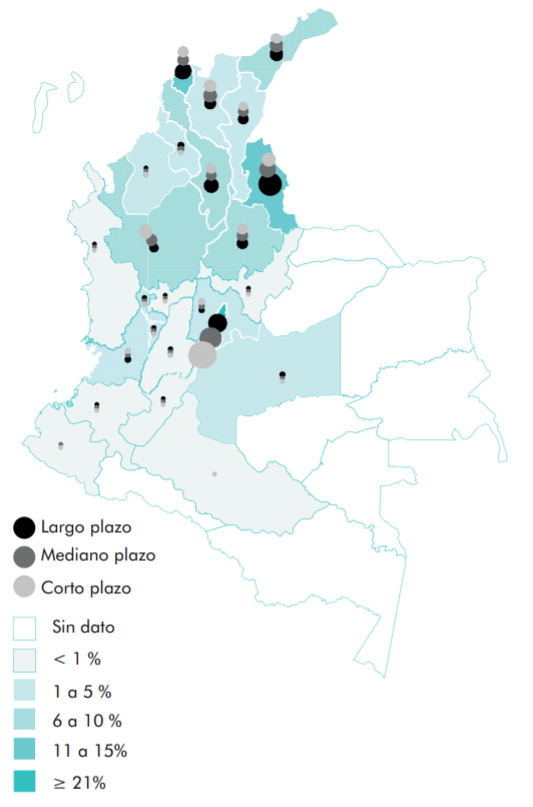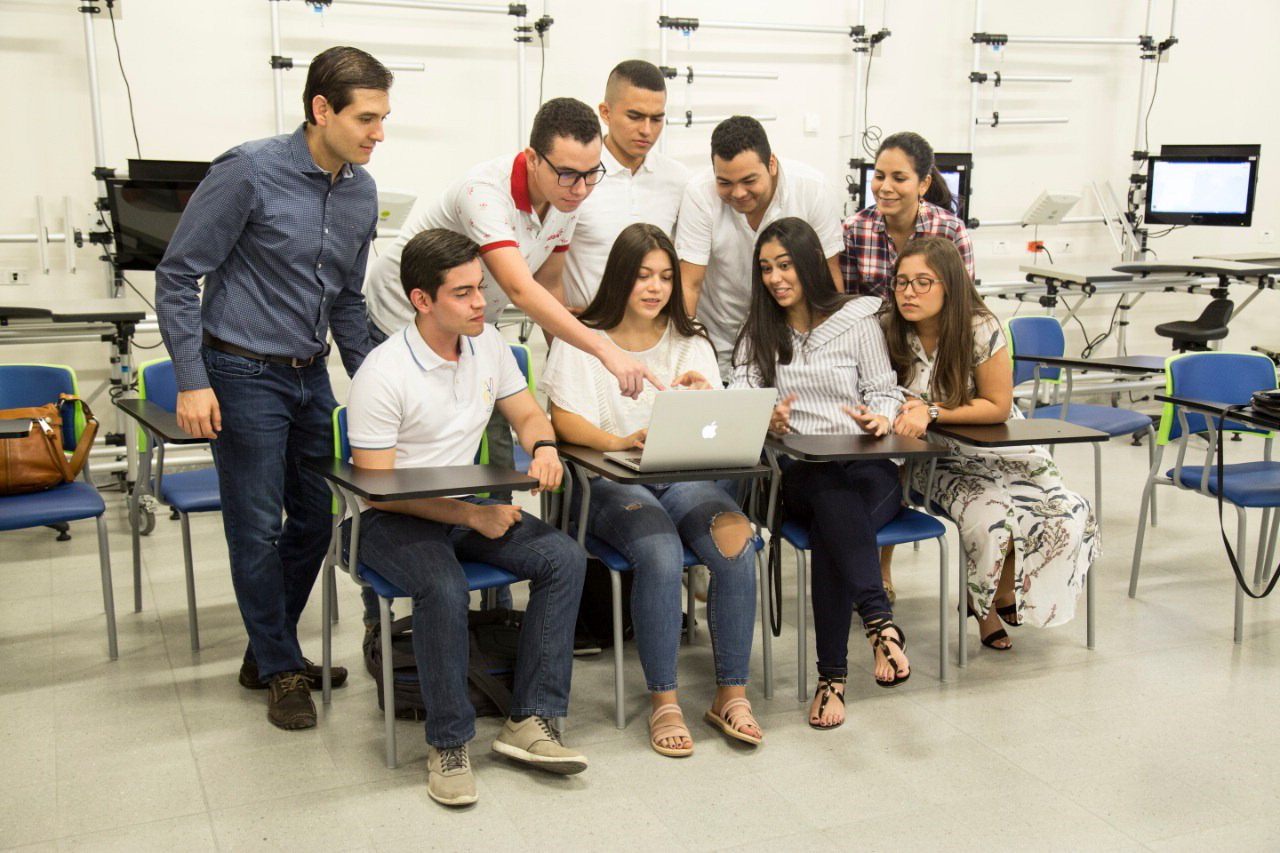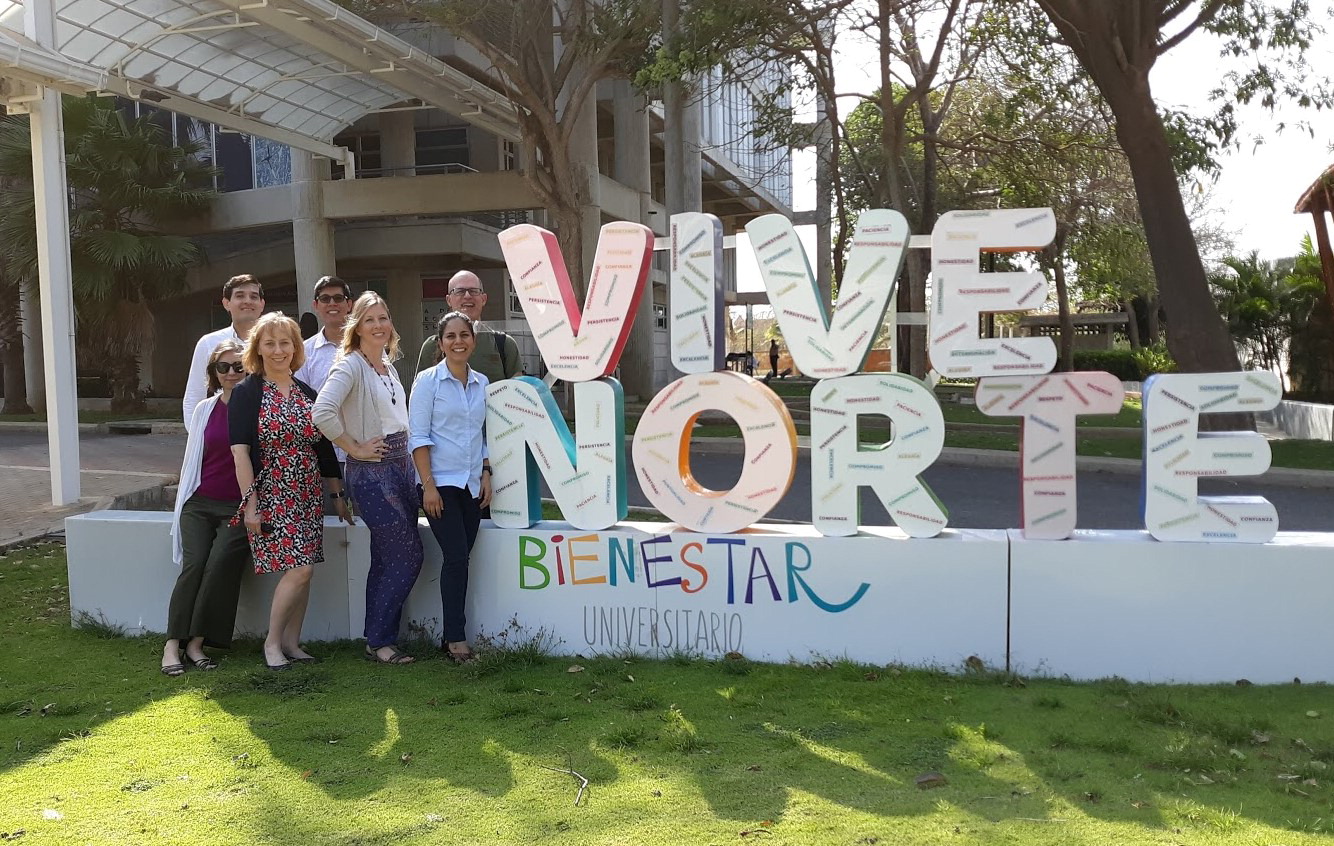|
Cycle 8 (2019 Deadline)
Voluntary geographic redistribution of Venezuelan immigrants in Colombia
PI: Gina Galindo-Pacheco (ggalindo@uninorte.edu.co), Universidad del Norte, Barranquilla, Colombia
U.S. Partner: Jens Hainmueller, Stanford University
Project Dates: November 2019 - February 2022
Project Overview:
 | | Venezualan immigrant distribution. Source:Proyecto Migración Colombia, Boletín 01, December 2018. Courtesy of Dr. Galindo-Pacheco |
The main goal of this project is to develop a tool for identifying a potential resettlement location to be recommended to immigrants coming from Venezuela to Colombia. The recommended location should optimize on the economic integration and well-being outcomes for the immigrants. The proposed methodology is based on a data-driven algorithm developed by the Immigration Policy Lab (IPL) at Stanford University, where U.S. partner Dr. Jens Hainmueller is based. The algorithm looks into the historic success of economic integration (measured as the likelihood of finding a job) of immigrants at each location and relates such success with key characteristics of the immigrants, (e.g., English skills, age). Then, it predicts the probability of economic integration outcome for each immigrant in each location in the host country. Finally, the algorithm matches locations with family cases in order to maximize the total economic integration outcome for the immigrant families, while respecting constraints such as the number of available spots at each location. This is expected to contribute to balance the distribution of immigrants among locations in Colombia. The PI Dr. Galindo and her team will adapt the algorithm to the Colombian-Venezuelan context, taking into account their interests not only in economic integration but also in the well-being of immigrants, which implies considering the chances of fulfilling their basic needs, such as medical and educational services, among others. The ILP will provide support through all of the stages of the project to help the Colombian team verify and improve their approaches based on the knowledge and experience their U.S. partner has gained through the application his methodology in the United States and Switzerland. The project is particularly innovative in its attempt to develop a data-driven matching system for integration of immigrants coming from and arriving in a developing country. This is particularly relevant, since it is estimated that nearly half of all immigrants migrate among developing countries, mostly, to neighboring countries. Additionally, even though the problem of resettlement of immigrants has been addressed by several researchers in the past, research has focused solely on refugees, whereas this project would focus on Venezuelan immigrants in general.
The Organization of American States has estimated that by the end of 2019 the number of Venezuelan migrants will exceed 5 million, with more than 1 million of them arriving in Colombia, their leading destination. This project seeks to create a predictive tool to guide Venezuelan immigrants to the most appropriate locations in Colombia for voluntary resettlement with higher chances of economic integration and well-being. The tool also considers capacities and socioeconomic attributes of localities for better matching of immigrants and localities. The importance of informing settlement choices and guiding the strategic distribution of immigrants has been highlighted by “Proyecto Migración Venezuela” (PMV), which is sponsored by Revista Semana and USAID, and international organizations. This type of initiative has also attracted the interest of the Colombian government through the Border Management Office (BMO), which operates under the office of the Colombian president. This project is aligned with USAID’s mission of helping people to progress beyond assistance by identifying the locations and attributes that will enable better economic and social development of immigrant families. Furthermore, the project focuses on marginalized populations that are vulnerable and require immediate assistance to settle in a new country. The identification of key attributes or drivers that lead to immigrants successful integration should be helpful in guiding authorities in the development of specific training and social assistance programs.
Final summary of project activities
The aim of this project was to provide guidance about the locations in Colombia where Venezuelan immigrants would have greater chances of economic integration. The PI and her team developed a model that considers diverse characteristics of the Venezuelan immigrants such as job skills, health requirements, and location of relatives or acquaintances, among others. The main objective was to define a path with a higher chance of success for the immigrants and avoid the oversaturation of specific regions that may limit economic and social integration. In the course of the project, which began in November 2019 and ended in February 2022, the PEER team pursued three objectives, which included: (1) identifying key factors of success for immigrants or refugees in Colombia; (2) adapting and validating the data-driven refugee assignment algorithm developed by the Immigration Policy Lab (IPL) at Stanford University to the Colombian context; and (3) proposing strategies to maximize the chances of successful integration of specific immigrant groups, to include vulnerable segments of the population such as women, older people, and others. Finally, the team aimed at sharing their knowledge with stakeholder agencies so they can benefit from the proposed approach and results.
In the course of the project, the team achieved all of their objectives. They were able to Identify key factors of success, which are based on the significant variables in their predictive model. They found gender, education, occupation, age, and time in Colombia to be some of those significant variables. The project also identified key industries and activities that increase and decrease formal employment probabilities. It was possible to identify the types of occupations that favor more socio-economic integration for immigrants, which included real estate, education, and socio-cultural activities.
Working on adapting the algorithm to the Colombian context to estimate where Venezuelan immigrants should be located to maximize their probability of obtaining a formal job presented challenges, which led to key modifications to the algorithm. First, the socioeconomic output was defined as finding formal employment. Second, the project model explicitly accounts for the health and social needs of immigrant families. Third, the project team performed a cluster analysis to assess the capacity of receiving immigrants in each potential location. The model estimates that on average the probability of formal employment will increase by more than 50% if the suggested redistribution is adopted. The project identified locations that should decrease the number of immigrants and determined the destinations where better socioeconomic integration can be achieved in Guajira and Norte de Santander. Also, the algorithm identified locations that still have the potential to absorb immigrants, specifically, Valle del Cauca.
Based on the findings, the PEER team delivered a set of recommendations regarding the origins and destinations for the geographic redistribution of Venezuelan immigrants in Colombia. They also developed a separate analysis for older people, women, and immigrants whose characteristics match with those that have been identified as the least favorable for socioeconomic integration. In this regard, this model predicts that improving the educational level of certain individuals can increase their chances of integration up to 85%. Also, the PEER team was able to connect with governmental and non-governmental organizations. They shared their knowledge and explained their process approach. Moreover, they delivered a set of recommendations that can contribute to improvement of ongoing and future projects.
In terms of development impacts, according to Dr. Galindo, as a result of her PEER project research, her PEER project team was able to provide their set of recommendations with regard to pilot immigrant relocation program led by the UNHCR Colombia team, which is intended to improve their socioeconomic integration. The recommendations are mainly related to the origins and destinations to be prioritized, taking into consideration which locations are least and most preferable for the socioeconomic integration of the immigrants. The UNHCR team compared their selected origins and destinations to the routes (origin-destination) suggested by the algorithm in order to obtain insights. They are also considering origins and destinations that are different from their first approach, but which make sense based on the results from the PEER project. UNHCR is also interested in updating the recommendations by re-adapting the algorithm, while considering additional features that are relevant to the migration process, such as xenophobia and transportation costs.
Now that the project has ended, the team is exploring possibilities to extend their work. With proper credit given to USAID as the funder of their original project, the researchers intend to apply their developed PEER project models and algorithms in outside consulting projects in addition to their ongoing academic research activities.
 |  | | PI Dr. Gina M. Galindo Pacheco, co-PI Daniel H. Romero Rodriguez, and students involved in the project | NAS and USAID PEER team from Washington DC visiting Dr. Galindo's PEER project in March 2020. |
Back to PEER Cycle 8 Grant Recipients
|
|
|
|






